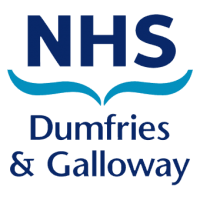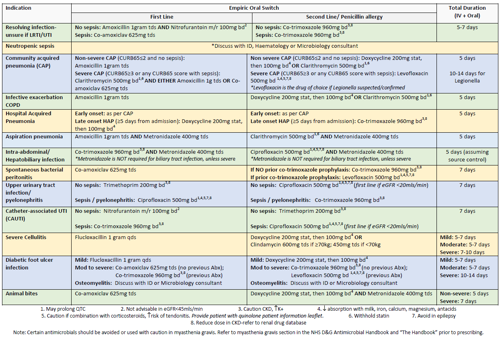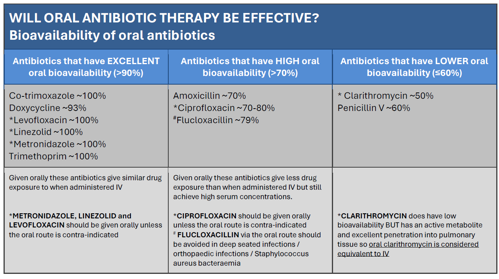If antibiotic treatment is in line with Empirical Antibiotic Guidelines and there is no positive microbiology to guide the change, then select oral regimen as per table below.
Click table for larger version / pdf.
Click table for larger version / pdf.
** All doses are for normal renal and hepatic function **
See BNF/ SPC/ Renal Drug Database or seek pharmacy advice regarding dose adjustments or drug interactions
See BNF/ SPC/ Renal Drug Database or seek pharmacy advice regarding dose adjustments or drug interactions



